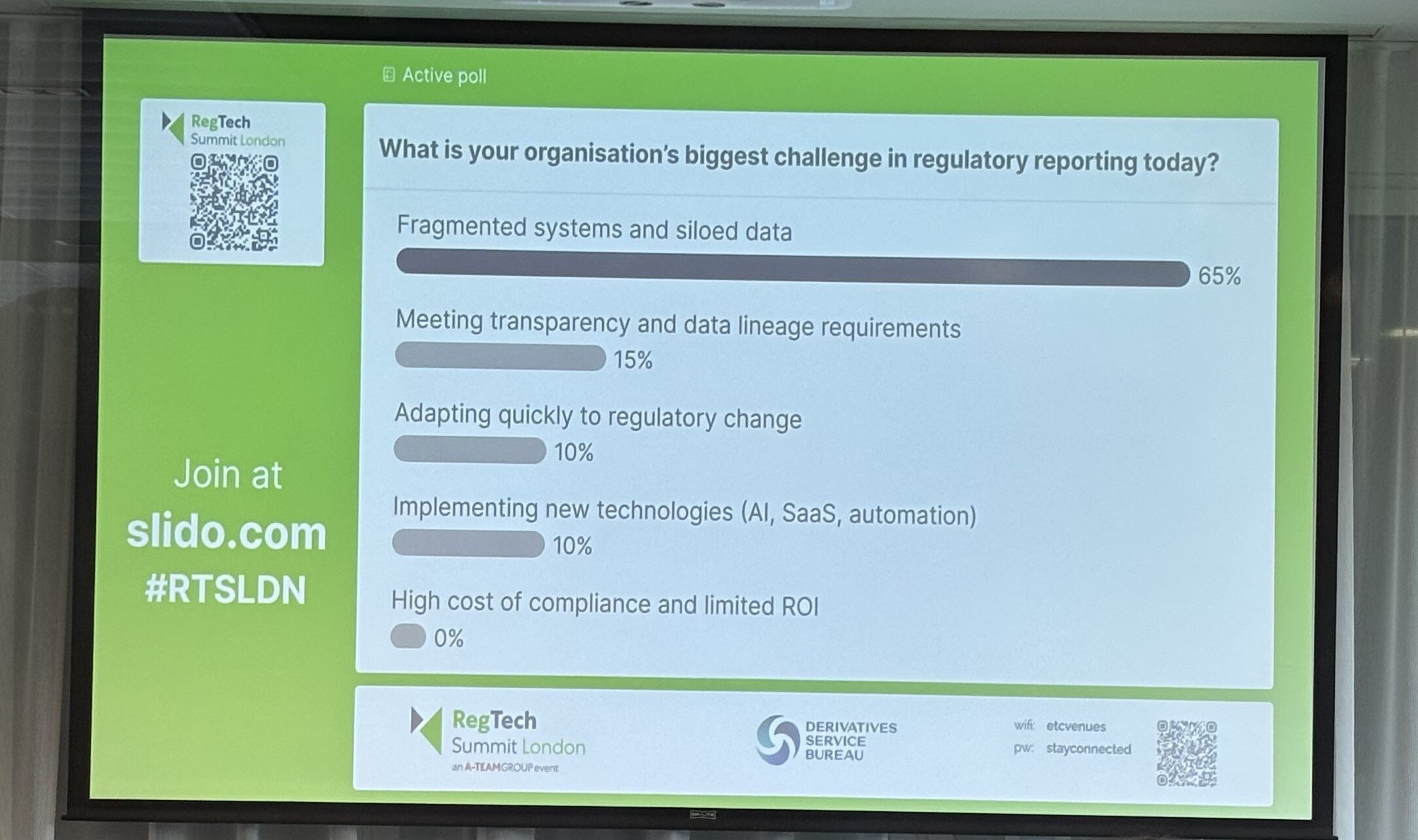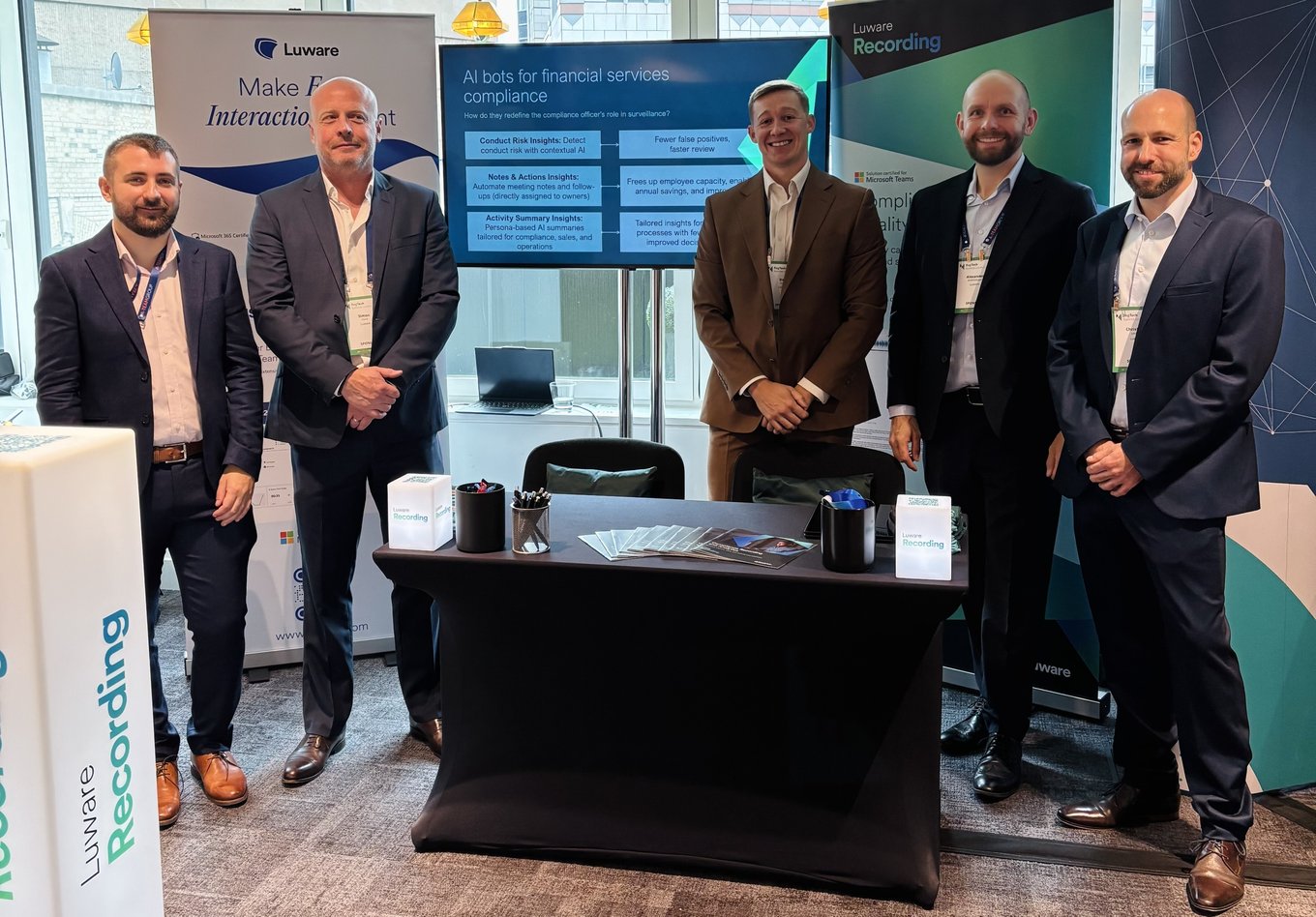The RegTech landscape is evolving at a breathtaking pace, and the recent RegTech Summit in London (RTS25) made one thing crystal clear: Artificial intelligence (AI) is revolutionizing compliance from a cost center to a value driver. But, as with any transformative journey, the path ahead is not without its challenges.
In this article, we'll explore the key takeaways from the summit regarding the opportunities and obstacles that come with embracing AI-powered compliance.
| What is the RegTech Summit London? |
| The RegTech Summit London is one of the leading industry gatherings focused on the future of regulatory technology. It brings together compliance leaders, regulators, and technology innovators to discuss how emerging tools can help financial services organizations meet complex regulatory requirements more efficiently. |
From oversight to value creation: The new frontier of compliance
Traditional compliance teams have long been focused on monitoring and reporting, but the game is changing. Today, these teams are being asked to do more: To drive commercial value while maintaining rigorous oversight. It's a tall order, but one that's being made possible by the emergence of "compliance copilots": AI-powered assistants that monitor, flag issues, and even explain their reasoning.
The vision is a future where compliance officers operate like pilots in a cockpit, overseeing multiple systems in real-time rather than working reactively. Imagine a world where compliance is no longer a rearview mirror activity, but a proactive, forward-looking function that enables businesses to stay ahead of the curve.
This is the promise of AI-powered compliance, and it's an exciting prospect for firms looking to unlock new levels of efficiency, insight, and competitive advantage.
The real-time compliance challenge: Balancing innovation and accountability
That said, while real-time AI monitoring is a tantalizing prospect, it's also a daunting one. Executives are raising concerns that live oversight could disrupt existing compliance cultures and introduce risk if not implemented carefully. The consensus is clear: Automation must come with transparency, governance, and explainability. In turn, AI models in compliance will need clear audit trails, with every decision logged, recorded, and reproducible.
This is a critical juncture for RegTech, as firms looking to harness the power of AI in compliance navigate the trade-offs between innovation and accountability. It's a delicate balance, but one that's essential for building trust in AI-powered compliance systems.
Explainability and governance: The keys to unlocking AI-powered compliance
Explainability remains a sticking point, and it's an issue that's not unique to RegTech. Full transparency into complex AI models is not yet possible—and perhaps never will be. But even partial explainability can be enough to build trust in AI-powered systems. As one expert noted, "Even doctors can't fully explain the brain, but they still save lives." The goal is traceable AI, where every prompt, decision, and follow-up step can be tracked and reviewed.
Governance is also critical, as firms need to ensure that AI-powered compliance systems are aligned with regulatory requirements such as MiFID III and DORA, and internal risk management frameworks. This means establishing clear guidelines and protocols for AI development, deployment, and monitoring, as well as ensuring that AI systems are subject to regular testing and validation.
Data silos and cross-asset surveillance: The challenge of integration
As was evident from a poll conducted at the summit, data integration remains one of the sector's toughest challenges, as many firms still operate with siloed communication, trading, and jurisdictional data. This makes it difficult to gain a unified view across assets or markets, and it's a problem that regulators are increasingly prioritizing. Firms that can achieve cross-asset visibility stand to lead the pack, but it's a complex task that requires significant investment in data infrastructure and integration.
 Poll regarding the biggest challenge in regulatory reporting.
Poll regarding the biggest challenge in regulatory reporting.
Some institutions are building their own surveillance and data correlation systems to tackle this head-on, reflecting a broader trend towards custom AI solutions tuned for regulatory environments. This is a significant opportunity for firms, as it enables them to develop AI-powered compliance systems that are tailored to their specific needs and requirements.
Private models and data quality: The keys to unlocking AI-powered compliance
While public large language models (LLMs) grab headlines, financial institutions are increasingly opting for private AI models to maintain control, privacy, and compliance. Yet, training these private systems with high-quality data remains a bottleneck, as many firms struggle to source, clean, and structure data effectively.
The cost of doing so is significant, and there's confusion amongst financials on which business entity should foot the bill for such complex data transformation tasks. The compliance team, as a cost center, doesn't have the budget allocated, and it's a challenge that firms need to address if they're to unlock the full potential of AI-powered compliance.
Agentic AI and workflow automation: The future of compliance
Another major talking point at the conference was the emergence of Agentic AI: Systems capable of independently following data trails and escalating potential risks. These tools are being explored for use cases like market abuse detection, data leakage, and financial crime monitoring, and they have the potential to revolutionize compliance workflows.
Agentic systems could assist in automation of Know Your Customer (KYC) checks, sanctions screening, and due diligence, drastically reducing manual workload while improving accuracy. This is a significant opportunity for firms, as it enables them to unlock new levels of efficiency and productivity in compliance.
The impact of AI in compliance: Practical use cases
Now that we’ve explored why AI matters for compliance, let’s look at where it’s making the biggest impact. The use cases below show how financial institutions are applying AI to solve real challenges while staying aligned with strict oversight requirements.
| Use case |
What it solves |
AI advantage |
| Market abuse surveillance |
Detects spoofing, layering, insider trading |
Real-time pattern analysis, fewer false positives |
| KYC & AML automation |
Speeds onboarding, reduces compliance costs |
Automates checks, risk scoring, adverse media |
| Cross-asset surveillance |
Finds manipulation across asset classes |
Correlates trades across markets and jurisdictions |
| Transaction monitoring |
Prevents fraud and money laundering |
Instant alerts, adaptive models |
| Regulatory change management |
Keeps policies aligned with new rules |
AI scans updates, maps to workflows |
| Workflow automation |
Speeds investigations and reporting |
Automates triage, SAR (Suspicious Activity Report) drafting |
| Private AI models |
Protects sensitive data |
Controlled environments, RAG (Retrieval-Augmented Generation) via secure knowledge bases |
| Agentic AI for risk |
Proactive risk detection and escalation |
Autonomous agents under governance guardrails |
Testing, evidence, and trust: The foundations of AI-powered compliance
To sum up, pre-testing, live-testing, and post-testing of AI models are becoming standard in regulated environments, and it's a critical aspect of building trust in AI-powered compliance systems. The three keywords repeated throughout the summit were:
- Evidence: AI models need to be backed by robust evidence, demonstrating their effectiveness and reliability in compliance workflows.
- Explainability: AI models need to be transparent and explainable, enabling compliance officers to understand the reasoning behind their decisions.
- Trust: AI models need to be trustworthy, with clear audit trails and reproducible results that enable compliance officers to build confidence in their decisions.
Without these, even the most advanced AI systems will face resistance from regulators and internal risk committees alike. It's a challenge that firms need to address, and it's one that requires a deep understanding of AI, compliance, and regulatory requirements.
The takeaway: Harnessing the power of AI in RegTech
The RegTech sector is entering a pivotal phase, one where AI, data integrity, and compliance oversight must evolve together. Firms that embrace transparent, traceable, and tested AI systems won't just stay compliant—they'll unlock new levels of efficiency, insight, and competitive advantage.
The message from the RegTech Summit London was clear: The future of compliance isn't about catching up, but about staying ahead. It's a future where AI-powered compliance systems enable firms to proactively manage risk, unlock new levels of productivity, and build trust with regulators and stakeholders alike. It's an exciting prospect, and one that's within reach for firms that are willing to invest in the latest technologies and techniques.



 Poll regarding the biggest challenge in regulatory reporting.
Poll regarding the biggest challenge in regulatory reporting.


